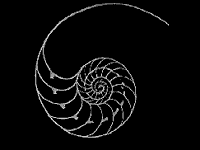|
Pi is both the sixteenth letter of the Greek alphabet and the symbol which represents the world's oldest mathematical mystery: the ratio of a circle's circumference to its diameter. The earliest known written record of the ratio comes from 1650 BCE Egypt, where a scribe calculated the value to be 3.16 (a mere 1% off the true value). Although now, we have methods to calculate the digits of pi (3.1415...) its exact value remains a mystery. Since 1794, when it was proven that Pi was both irrational and infinite, people have been searching for a pattern in the endless string of numbers. As it turns out, Pi can be found everywhere, from astronomy to probability to the physics of sound and light. To date it has been calculated to over 51 billion digits, so far with no discernible pattern emerging from its numbers. In fact, the first time that the sequence 123456789 appears, it is over 500 million digits into the ratio. Calculating the digits to millions of decimal places is now used to test computers for bugs in hardware and software (which is how Intel's Pentium found a chip bug a few years ago). If you prefer to calculate Pi the old fashioned way, you're not alone. Hundreds of clubs have been formed to celebrate and calculate the ratio, many of which require a good deal of sequence memorization in order to join. The current world record for pi memorization was made in 1995, when a Japanese man recited 42,000 digits from memory in just over nine hours. Merhaba ustteki yazi sadece bir on hazirlikti...Aslinda amacim izledigim en sahane filmlerden biri olan Pi'yi anlatmak. Yakinda goruntuleriyle birlikte burada bulacaksiniz. |

